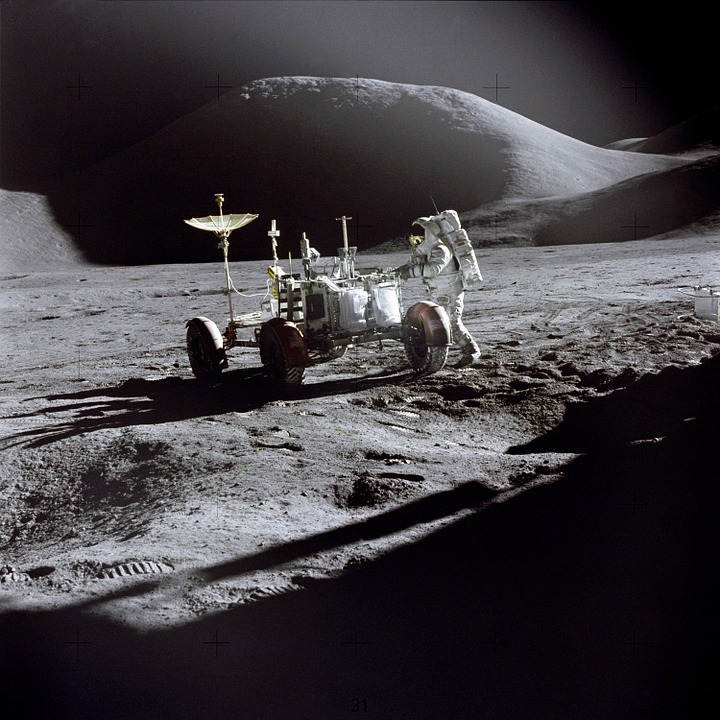Although NASA was able to succeed in ending the Space Race with the USSR in 1969 with the Apollo 11 mission, today’s goals of setting up a base on the Moon became one of its earlier aspirations. As it turns out, Washington had plans to build a Moon base much earlier.
NASA today is working towards bringing back the next humans and the first woman on the Moon next year through its Artemis program. One of the agency’s goals is also to establish a lunar base by the end of the decade. However, it was recently revealed that Washington already had plans for a lunar base back in the late 1950s, 10 years before Neil Armstrong and Buzz Aldrin would land on the Moon.
In 1959, in what would seemingly be the height of the Space Race, the US Army brought forth a top-secret plan called Project Horizon. This followed the Soviet’s launch of the Sputnik satellite back in 1957. Project Horizon’s proposal had an opening line that said that there is a need to set up a manned military base on the Moon. The proposal also stressed that establishing a lunar military base was needed as soon as possible for the purposes of national security.
“To be second to the Soviet Union in establishing an outpost on the Moon would be disastrous to our nation’s prestige and in turn our democratic philosophy. Once established, the lunar base will be operated under the control of a unified space command,” according to the proposal. “The space around the Earth and Moon would be considered a military theater.”
Recently, NASA discovered that the galaxy cluster of Abell 2261 does not have a supermassive black hole at its center. The black hole in question is widely believed to have a mass between three and 100 billion times the mass of the Sun. In a study that spanned five years with the use of the Chandra X-Ray Observatory and the Hubble Space Telescope, NASA astronomers found that the massive black hole is nowhere to be found. This could pose serious consequences to life on Earth.



 Tabletop particle accelerator could transform medicine and materials science
Tabletop particle accelerator could transform medicine and materials science  SpaceX’s Starship Completes 11th Test Flight, Paving Way for Moon and Mars Missions
SpaceX’s Starship Completes 11th Test Flight, Paving Way for Moon and Mars Missions  NASA Cuts Boeing Starliner Missions as SpaceX Pulls Ahead
NASA Cuts Boeing Starliner Missions as SpaceX Pulls Ahead  Ancient Mars may have had a carbon cycle − a new study suggests the red planet may have once been warmer, wetter and more favorable for life
Ancient Mars may have had a carbon cycle − a new study suggests the red planet may have once been warmer, wetter and more favorable for life  Lab-grown meat: you may find it icky, but it could drive forward medical research
Lab-grown meat: you may find it icky, but it could drive forward medical research  Lost in space: MethaneSat failed just as NZ was to take over mission control – here’s what we need to know now
Lost in space: MethaneSat failed just as NZ was to take over mission control – here’s what we need to know now  FDA Pilot Program Eases Rules for Nicotine Pouch Makers
FDA Pilot Program Eases Rules for Nicotine Pouch Makers  NASA Astronauts Wilmore and Williams Recover After Boeing Starliner Delay
NASA Astronauts Wilmore and Williams Recover After Boeing Starliner Delay  Trump Signs Executive Order to Boost AI Research in Childhood Cancer
Trump Signs Executive Order to Boost AI Research in Childhood Cancer  Cogent Biosciences Soars 120% on Breakthrough Phase 3 Results for Bezuclastinib in GIST Treatment
Cogent Biosciences Soars 120% on Breakthrough Phase 3 Results for Bezuclastinib in GIST Treatment  Trump and Merck KGaA Partner to Slash IVF Drug Costs and Expand Fertility Coverage
Trump and Merck KGaA Partner to Slash IVF Drug Costs and Expand Fertility Coverage  Is space worth the cost? Accounting experts say its value can’t be found in spreadsheets
Is space worth the cost? Accounting experts say its value can’t be found in spreadsheets  Neuralink Expands Brain Implant Trials with 12 Global Patients
Neuralink Expands Brain Implant Trials with 12 Global Patients 































